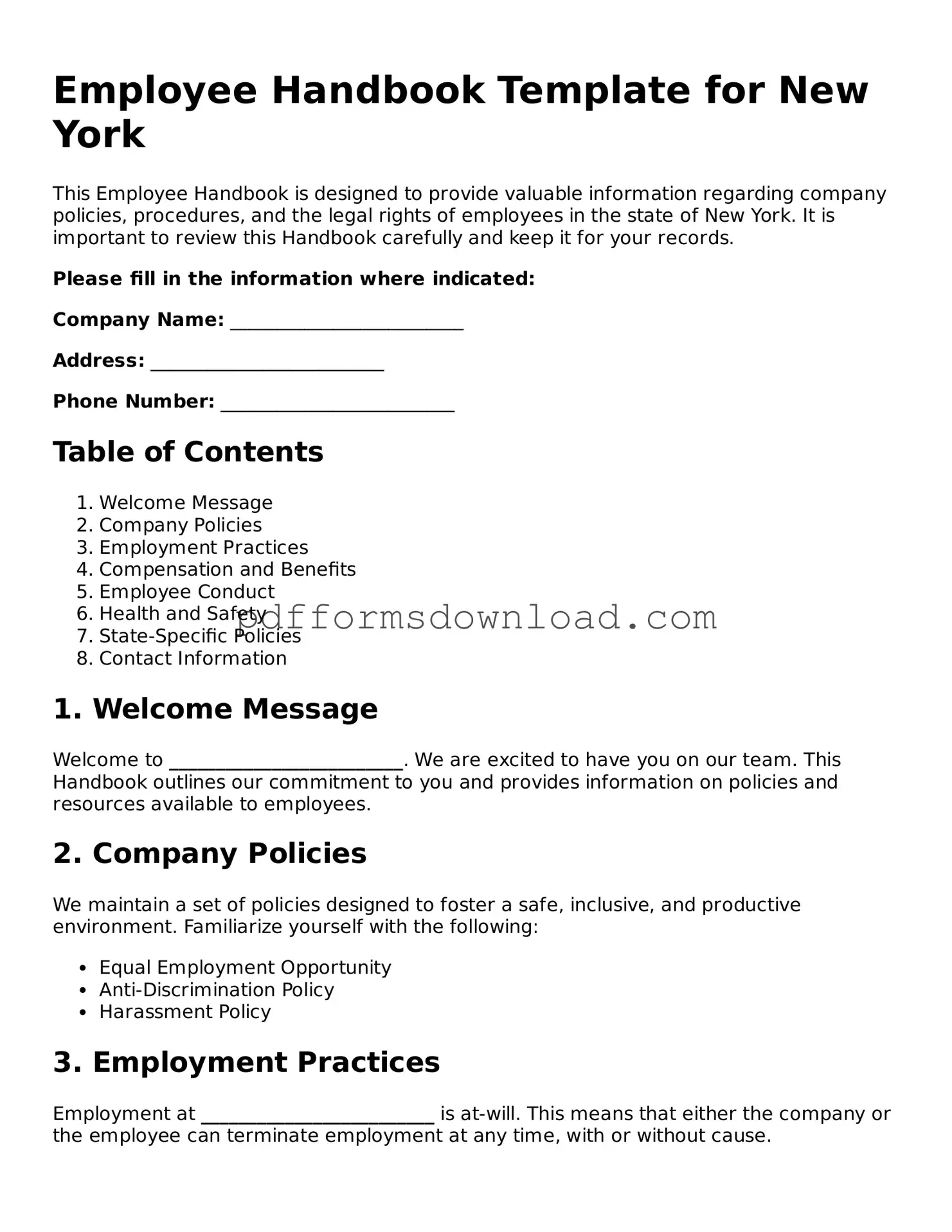What is the New York Employee Handbook form?
The New York Employee Handbook form is a document that outlines the policies, procedures, and expectations of an employer regarding their employees. It serves as a guide for employees to understand their rights and responsibilities within the workplace. This handbook is essential for establishing a clear understanding between the employer and employees, fostering a positive work environment.
Why is an Employee Handbook important?
An Employee Handbook is important because it helps to set clear expectations for behavior and performance in the workplace. It can also provide legal protection for both the employer and the employee. By outlining company policies, it reduces the chances of misunderstandings and disputes. Furthermore, having a well-structured handbook can help ensure compliance with state and federal laws.
What should be included in the New York Employee Handbook?
The handbook should include a variety of topics such as company policies, employee rights, workplace conduct, benefits, and procedures for reporting issues. Common sections might cover topics like anti-discrimination policies, harassment prevention, attendance requirements, and disciplinary procedures. It’s also beneficial to include information about employee benefits, leave policies, and any safety protocols that must be followed.
How often should the Employee Handbook be updated?
It is advisable to review and update the Employee Handbook regularly, at least once a year. Changes in laws, company policies, or workplace culture can necessitate updates. Keeping the handbook current ensures that employees have access to the latest information and helps the company remain compliant with legal requirements.
Do employees need to sign an acknowledgment of the Employee Handbook?
Yes, it is a good practice for employees to sign an acknowledgment form after receiving the Employee Handbook. This signature indicates that they have read, understood, and agreed to abide by the policies outlined in the handbook. This can serve as a valuable record in case any disputes arise in the future.
Can an Employee Handbook be used in legal disputes?
Yes, an Employee Handbook can be used in legal disputes. If there are disagreements regarding workplace policies or employee behavior, the handbook can serve as a reference point. Courts may look at the handbook to determine whether the employer and employee followed the outlined procedures. Therefore, it’s crucial for the handbook to be clear and comprehensive.
How can employees access the Employee Handbook?
Employees should be able to access the Employee Handbook easily. Many companies provide a physical copy during onboarding, while others may offer it digitally through an employee portal or company website. Ensuring that all employees know where to find the handbook is important for promoting transparency and understanding of workplace policies.
